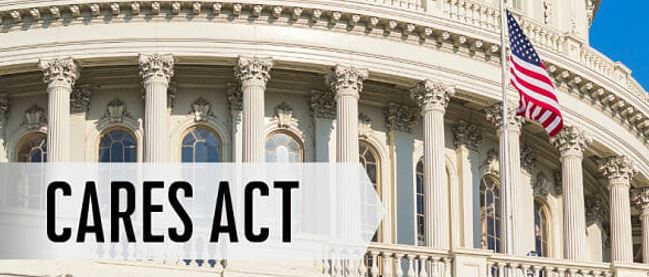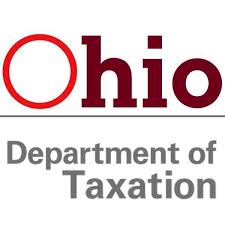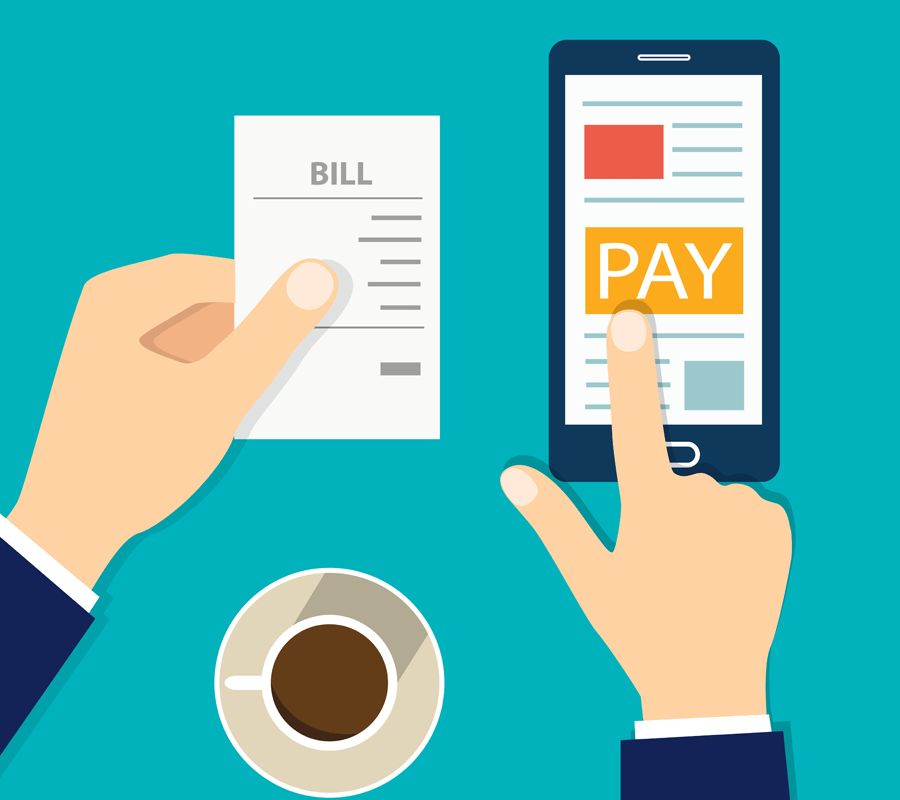
We hope that you are keeping yourself, your loved ones, and your community safe from COVID-19. Along with those paramount health concerns, you may be wondering about some of the recent tax changes meant to help everyone coping with the fallout. We want to update you on the tax-related provisions in the Coronavirus Aid, Relief, and Economic Security (CARES) Act, Congress’s gigantic economic stimulus package that the President signed into law last week.
Recovery Rebates for Individuals
To help individuals stay afloat during this time of economic uncertainty, the government will send up to $1,200 payments to eligible taxpayers and $2,400 for married couples filing joints returns. An additional $500 additional payment will be sent to taxpayers for each qualifying child dependent under age 17 (using the qualification rules under the Child Tax Credit).
Rebates are gradually phased out, at a rate of 5% of the individual’s adjusted gross income over $75,000 (singles or marrieds filing separately), $122,500 (head of household), and $150,000 (joint). There is no income floor or ”phase-in”-all recipients who are under the phaseout threshold will receive the same amounts. Tax filers must have provided, on the relevant tax returns or other documents (see below), Social Security Numbers (SSNs) for each family member for whom a rebate is claimed. Adoption taxpayer identification numbers will be accepted for adopted children. SSNs are not required for spouses of active military members. The rebates are not available to nonresident aliens, to estates and trusts, or to individuals who themselves could be claimed as dependents.
The rebates will be paid out in the form of checks or direct deposits. Most individuals won’t have to take any action to receive a rebate. IRS will compute the rebate based on a taxpayer’s tax year 2019 return (or tax year 2018, if no 2019 return has yet been filed). If no 2018 return has been filed, IRS will use information for 2019 provided in Form SSA-1099, Social Security Benefit Statement, or Form RRB-1099, Social Security Equivalent Benefit Statement.
Rebates are payable whether or not tax is owed. Thus, individuals who had little or no income, such as those who filed returns simply to claim the refundable earned income credit or child tax credit, qualify for a rebate.
Waiver of 10% Early Distribution Penalty
The additional 10% tax on early distributions from IRAs and defined contribution plans (such as 401(k) plans) is waived for distributions made between January 1 and December 31, 2020 by a person who (or whose family) is infected with the Coronavirus or who is economically harmed by the Coronavirus (a qualified individual). Penalty-free distributions are limited to $100,000, and may, subject to guidelines, be re-contributed to the plan or IRA. Income arising from the distributions is spread out over three years unless the employee elects to turn down the spread out. Employers may amend defined contribution plans to provide for these distributions. Additionally, defined contribution plans are permitted additional flexibility in the amount and repayment terms of loans to employees who are qualified individuals.
Waiver of required distribution rules. Required minimum distributions that otherwise would have to be made in 2020 from defined contribution plans (such as 401(k) plans) and IRAs are waived. This includes distributions that would have been required by April 1, 2020, due to the account owner’s having turned age 70 1/2 in 2019.
Charitable Deduction Liberalizations
The CARES Act makes four significant liberalizations to the rules governing charitable deductions:
(1) Individuals will be able to claim a $300 above-the-line deduction for cash contributions made, generally, to public charities in 2020. This rule effectively allows a limited charitable deduction to taxpayers claiming the standard deduction.
(2) The limitation on charitable deductions for individuals that is generally 60% of modified adjusted gross income (the contribution base) doesn’t apply to cash contributions made, generally, to public charities in 2020 (qualifying contributions). Instead, an individual’s qualifying contributions, reduced by other contributions, can be as much as 100% of the contribution base. No connection between the contributions and COVID-19 activities is required.
(3) Similarly, the limitation on charitable deductions for corporations that is generally 10% of (modified) taxable income doesn’t apply to qualifying contributions made in 2020. Instead, a corporation’s qualifying contributions, reduced by other contributions, can be as much as 25% of (modified) taxable income. No connection between the contributions and COVID-19 activities is required.
(4) For contributions of food inventory made in 2020, the deduction limitation increases from 15% to 25% of taxable income for C corporations and, for other taxpayers, from 15% to 25% of the net aggregate income from all businesses from which the contributions were made.
Exclusion for Employer Payments of Student Loans
An employee currently may exclude $5,250 from income for benefits from an employer-sponsored educational assistance program. The CARES Act expands the definition of expenses qualifying for the exclusion to include employer payments of student loan debt made before January 1, 2021.
Break for Remote Care Services Provided by High Deductible Health Plans
For plan years beginning before 2021, the CARES Act allows high deductible health plans to pay for expenses for tele-health and other remote services without regard to the deductible amount for the plan.
Break for Nonprescription Medical Products
For amounts paid after December 31, 2019, the CARES Act allows amounts paid from Health Savings Accounts and Archer Medical Savings Accounts to be treated as paid for medical care even if they aren’t paid under a prescription. And, amounts paid for menstrual care products are treated as amounts paid for medical care. For reimbursements after December 31, 2019, the same rules apply to Flexible Spending Arrangements and Health Reimbursement Arrangements.
Business Only Provisions
Employee Retention Credit for Employers
Eligible employers can qualify for a refundable credit against, generally, the employer’s 6.2% portion of the Social Security (OASDI) payroll tax (or against the Railroad Retirement tax) for 50% of certain wages (below) paid to employees during the COVID-19 crisis.
The credit is available to employers carrying on business during 2020, including non-profits (but not government entities), whose operations for a calendar quarter have been fully or partially suspended as a result of a government order limiting commerce, travel or group meetings. The credit is also available to employers who have experienced a more than 50% reduction in quarterly receipts, measured on a year-over-year basis relative to the corresponding 2019 quarter, with the eligible quarters continuing until the quarter after there is a quarter in which receipts are greater than 80% of the receipts for the corresponding 2019 quarter.
For employers with more than 100 employees in 2019, the eligible wages are wages of employees who aren’t providing services because of the business suspension or reduction in gross receipts described above.
For employers with 100 or fewer full-time employees in 2019, all employee wages are eligible, even if employees haven’t been prevented from providing services. The credit is provided for wages and compensation, including health benefits, and is provided for the first $10,000 in eligible wages and compensation paid by the employer to an employee. Thus, the credit is a maximum $5,000 per employee.
Wages don’t include:
(1) wages taken into account for purposes of the payroll credits provided by the earlier Families First Coronavirus Response Act for required paid sick leave or required paid family leave,
(2) wages taken into account for the employer income tax credit for paid family and medical leave (under
Code Sec. 45S) or
(3) wages in a period in which an employer is allowed for an employee a work opportunity credit (under
Code Sec. 51). An employer can elect to not have the credit apply on a quarter-by-quarter basis.
The IRS has authority to advance payments to eligible employers and to waive penalties for employers who do not deposit applicable payroll taxes in reasonable anticipation of receiving the credit. The credit is not available to employers receiving Small Business Interruption Loans. The credit is provided for wages paid after March 12, 2020 through December 31, 2020.
Delayed Payment of Employer Payroll Taxes
Taxpayers (including self-employeds) will be able to defer paying the employer portion of certain payroll taxes through the end of 2020, with all 2020 deferred amounts due in two equal installments, one at the end of 2021, the other at the end of 2022. Taxes that can be deferred include the 6.2% employer portion of the Social Security (OASDI) payroll tax and the employer and employee representative portion of Railroad Retirement taxes (that are attributable to the employer 6.2% Social Security (OASDI) rate). The relief isn’t available if the taxpayer has had debt forgiveness under the CARES Act for certain loans under the Small Business Act as modified by the CARES Act (see below). For self-employeds, the deferral applies to 50% of the Self-Employment Contributions Act tax liability (including any related estimated tax liability).
Net Operating Loss Liberalizations
The 2017 Tax Cuts and Jobs Act (the 2017 Tax Law) limited NOLs arising after 2017 to 80% of taxable income and eliminated the ability to carry NOLs back to prior tax years. For NOLs arising in tax years beginning before 2021, the CARES Act allows taxpayers to carryback 100% of NOLs to the prior five tax years, effectively delaying for carrybacks the 80% taxable income limitation and carryback prohibition until 2021.
The Act also temporarily liberalizes the treatment of NOL carryforwards. For tax years beginning before 2021, taxpayers can take an NOL deduction equal to 100% of taxable income (rather than the present 80% limit). For tax years beginning after 2021, taxpayers will be eligible for: (1) a 100% deduction of NOLs arising in tax years before 2018, and (2) a deduction limited to 80% of taxable income for NOLs arising in tax years after 2017.
The provision also includes special rules for REITS, life insurance companies, and the
Code Sec. 965 transition tax. There are also technical corrections to the 2017 Tax Law effective dates for NOL changes.
Deferral of Noncorporate Taxpayer Loss Limits
The CARES Act retroactively turns off the excess active business loss limitation rule of the TCJA in
Code Sec. 461(l) by deferring its effective date to tax years beginning after December 31, 2020 (rather than December 31, 2017). (Under the rule, active net business losses in excess of $250,000 ($500,000 for joint filers) are disallowed by the 2017 Tax Law and were treated as NOL carryforwards in the following tax year.)
The CARES Act clarifies, in a technical amendment that is retroactive, that an excess loss is treated as part of any net operating loss for the year, but isn’t automatically carried forward to the next year. Another technical amendment clarifies that excess business losses do not include any deduction under
Code Sec. 172 (NOL deduction) or
Code Sec. 199A (qualified business income deduction).
Still another technical amendment clarifies that business deductions and income don’t include any deductions, gross income or gain attributable to performing services as an employee. And because capital losses of non-corporations cannot offset ordinary income under the NOL rules, capital loss deductions are not taken into account in computing the
Code Sec. 461(l) loss and the amount of capital gain taken into account cannot exceed the lesser of capital gain net income from a trade or business or capital gain net income.
Acceleration of Corporate AMT Liability Credit
The 2017 Tax Law repealed the corporate alternative minimum tax (AMT) and allowed corporations to claim outstanding AMT credits subject to certain limits for tax years before 2021, at which time any remaining AMT credit could be claimed as fully-refundable. The CARES Act allows corporations to claim 100% of AMT credits in 2019 as fully-refundable and further provides an election to accelerate the refund to 2018.
Relaxation of Business Interest Deduction Limit
The 2017 Tax Law generally limited the amount of business interest allowed as a deduction to 30% of adjusted taxable income (ATI). The CARES Act generally allows businesses, unless they elect otherwise, to increase the interest limitation to 50% of ATI for 2019 and 2020, and to elect to use 2019 ATI in calculating their 2020 limitation. For partnerships, the 30% of ATI limit remains in place for 2019 but is 50% for 2020. However, unless a partner elects otherwise, 50% of any business interest allocated to a partner in 2019 is deductible in 2020 and not subject to the 50% (formerly 30%) ATI limitation. The remaining 50% of excess business interest from 2019 allocated to the partner is subject to the ATI limitations. Partnerships, like other businesses, may elect to use 2019 partnership ATI in calculating their 2020 limitation.
Technical Correction to Restore Faster Write-offs for Interior Building Improvements
The CARES Act makes a technical correction to the 2017 Tax Law that retroactively treats:
(1) a wide variety of interior, non-load-bearing building improvements (qualified improvement property (QIP)) as eligible for bonus deprecation (and hence a 100% write-off) or for treatment as 15-year MACRS property or
(2) if required to be treated as alternative depreciation system property, as eligible for a write-off over 20 years. The correction of the error in the 2017 Tax Law restores the eligibility of QIP for bonus depreciation, and in giving QIP 15-year MACRS status, restores 15-year MACRS write-offs for many leasehold, restaurant and retail improvements.
Accelerated Payment of Credits for Required Paid Sick Leave and Family Leave
The CARES Act authorizes IRS broadly to allow employers an accelerated benefit of the paid sick leave and paid family leave credits allowed by the Families First Coronavirus Response Act by, for example, not requiring deposits of payroll taxes in the amount of credits earned.
The CARES Act gives single employer pension plan companies more time to meet their funding obligations by delaying the due date for any contribution otherwise due during 2020 until January 1, 2021. At that time, contributions due earlier will be due with interest. Also, a plan can treat its status for benefit restrictions as of December 31, 2019 as applying throughout 2020.
SBA Loan Debt Forgiveness
Amounts of Small Business Administration Section 7(a)(36) guaranteed loans that are forgiven under the CARES Act aren’t taxable as discharge of indebtedness income if the forgiven amounts are used for one of several permitted purposes. The loans have to be made during the period beginning on February 15, 2020 and ending on June 30, 2020.
Suspension of Certain Alcohol Excise Taxes
The CARES Act suspends alcohol taxes on spirits withdrawn during 2020 from a bonded premises for use in or contained in hand sanitizer produced and distributed in a manner consistent with FDA guidance related to the outbreak of virus SARSCoV- 2 or COVID-19.
Suspension of Certain Aviation Taxes
The CARES Act suspends excise taxes on air transportation of persons and of property and on the excise tax imposed on kerosene used in commercial aviation. The suspension runs from March 28, 2020 to December 31, 2020.
We would be happy to answer any questions about the above information or any other matters, related to COVID-19 or not.
Wishing all of you the very best in a difficult time.
 We hope that you are keeping yourself, your loved ones, and your community safe from COVID-19. Along with those paramount health concerns, you may be wondering about some of the recent tax changes meant to help everyone coping with the fallout. We want to update you on the tax-related provisions in the Coronavirus Aid, Relief, and Economic Security (CARES) Act, Congress’s gigantic economic stimulus package that the President signed into law last week.
We hope that you are keeping yourself, your loved ones, and your community safe from COVID-19. Along with those paramount health concerns, you may be wondering about some of the recent tax changes meant to help everyone coping with the fallout. We want to update you on the tax-related provisions in the Coronavirus Aid, Relief, and Economic Security (CARES) Act, Congress’s gigantic economic stimulus package that the President signed into law last week.



 The Ohio Tax Commissioner announced Friday that Ohio will be following the federal government and IRS in extending the deadline to file and pay the state income tax.
The Ohio Tax Commissioner announced Friday that Ohio will be following the federal government and IRS in extending the deadline to file and pay the state income tax.


 We have updated our crisis needs resource list and want to make sure these documents are available to all our clients and friends to utilize. Please review the links below with important resources and outlines of programs that are available for you:
We have updated our crisis needs resource list and want to make sure these documents are available to all our clients and friends to utilize. Please review the links below with important resources and outlines of programs that are available for you:
 On Sunday afternoon, Ohio Gov. Mike DeWine announced a stay-at-home order — or a shelter-in-place order — across the state amid the COVID-19 coronavirus pandemic.
On Sunday afternoon, Ohio Gov. Mike DeWine announced a stay-at-home order — or a shelter-in-place order — across the state amid the COVID-19 coronavirus pandemic.